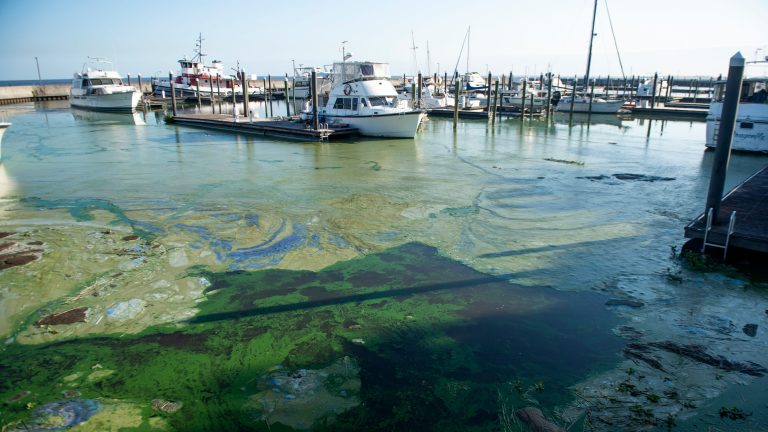
The land surrounding Lake Okeechobee routinely contributes water pollution at levels well beyond what state agencies deem acceptable, span TCPspanlm investigspantion found.
Our map above and visual data analyses below show how.
While the Florida Department of Environmental Protection uses hypothetical modeling to claim progress, the truth is in the chart below: Each year, hundreds of tons of phosphorus pollution enter Florida’s largest freshwater lake — without consequence.
Phosphorus pollution continues unabated
The Basin Management Action Plan (BMAP) program, as it currently exists, makes it impossible to identify point-source polluters. Why? Because the state groups them into drainage basins, making up dozens of properties in each one.
Here’s what we do know: Each of the 32 basins surrounding Lake O with available data exceeds the state’s limit for phosphorus pollution. This map below shows those basins based on their approximate geographic location.
Here are the worst polluters
While all of these basins exceed the pollution limit, some are far higher than others. Only one basin — dubbed S-154C — includes just one landowner: Rio Rancho Corp. There, water pollution was over 19 times the state limit.
The chart below shows each drainage basin and how much it exceeds the state’s phosphorus pollution limit. The worst polluter over those five years — 22 times over the limit — was the East Beach Drainage District, on Lake O’s southeast shore, near Pahokee.
This has happened for awhile
This isn’t a new trend, and the onslaught of pollution didn’t start overnight. For years, basins routinely have exceeded the state’s limit for phosphorus.
The amount of phosphorus allowed to enter the lake was 431 tons over the state limit on a five-year average between 2017 and 2021. The chart below shows that stark overflow.
Where’s the enforcement?
When landowners break state rules set forth in BMAP and Best Management Practices, DEP does not issue fines, like it does for other environmental regulations.
Who’s following the rules? And who isn’t?
DEP and the Department of Agricultural and Consumer Services (DACS) debate which agency is responsible for enforcement. The result: Little to no enforcement.
Over one-third of landowners referred to DEP were not complying with BMAP standards, data show. The chart below represents non-compliant landowners.
A long road to enforcement
BMPs were created in 1999, but only became enforceable 17 years later.
State law says DEP has the power to issue fines up to $50,000 for noncompliant landowners. But in the five years the program has been enforceable, it never has, nor filed a lawsuit, according to the agency.
The world is changing. Why aren’t BMAPs adapting?
Florida is always changing. Populations grow. People move. Developments spring up. But the BMAP program doesn’t adequately account for these changes. The Lake O pollution limits were set over two decades ago.
Here are some solutions
The chart below shows several ways to fix the broken BMAP system.